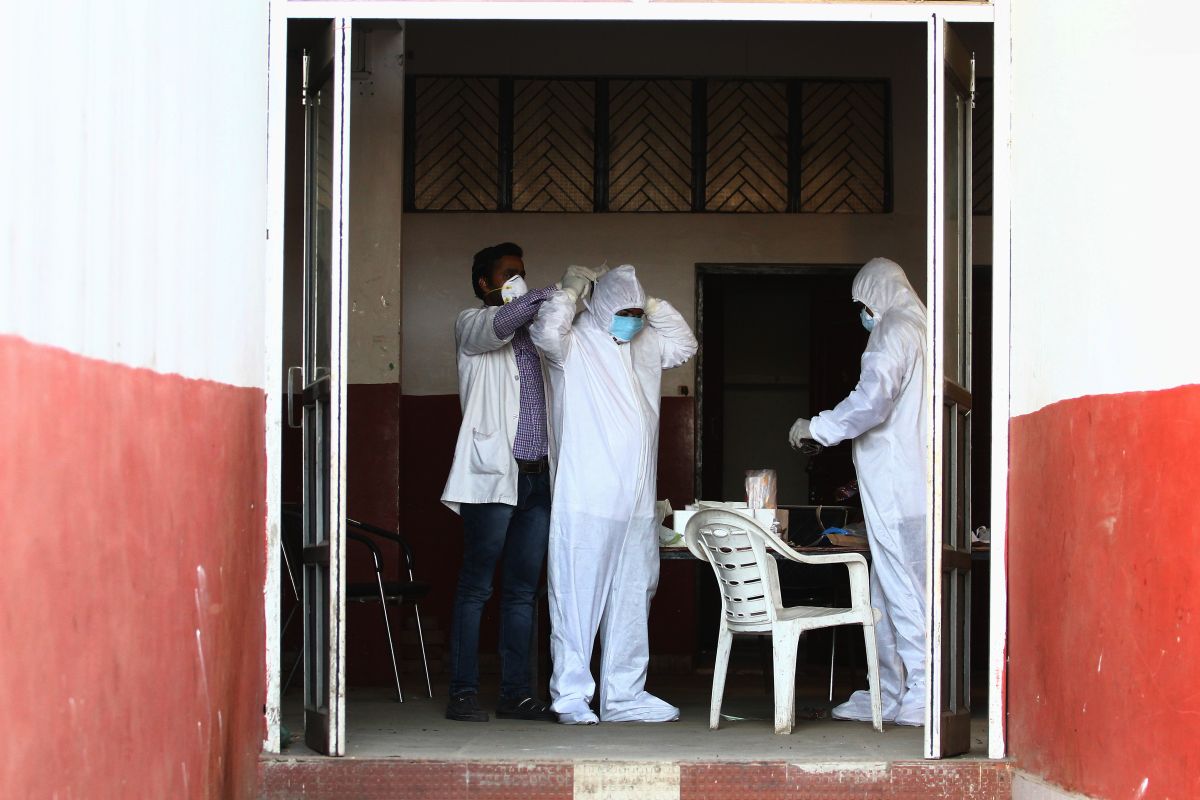India’s healthcare remains an Achilles’ heel and continues to undermine economic progress. This is largely on account of the abysmal and chaotic healthcare system. India ranks close to the bottom in international rankings in most health indices. The Covid-19 pandemic has exposed the fundamental problems plaguing the healthcare system, be it physical infrastructure, manpower or health management.
Beyond the crisis unleashed by the pandemic, the critical solutions that developed in its aftermath could help reframe the future of health care for the better. The government needs to spend more to create a more robust and all-encompassing public healthcare system. The country needs more public hospitals and the focus needs to shift from disease management to health management, patient education and prevention
India’s health system performs poorly on multiple dimensions. India ranks 145th among 195 countries listed on the Healthcare Access and Quality Index (HAQ). India’s healthcare spending at 3.5 per cent of Gross Domestic Product (GDP) is significantly lower than peers such as China (5 per cent), Vietnam (5.5 per cent), South Africa (8.1 per cent), and Japan (10.9 per cent). The Covid-19 situation has laid bare these realities and brought to the forefront the weak health infrastructure in the country.
Almost 122 Indians per 100,000 die due to poor quality care each year. This is much higher when compared to countries such as Brazil (74), Russia (91), China (46), and South Africa (93). Our neighbors Pakistan (119), Nepal (93), Bangladesh (57) and Sri Lanka (51) also fare much better than us. While India has taken initiatives to improve access to healthcare through various public health schemes, the quality of care remains low due to poor infrastructure, unskilled staff, and limited coordination among healthcare service providers (HSPs). For example, only 11 per cent of sub-centres and 13 per cent of PHCs meet the norms set by the Indian Public Health Standards (IPHS).
Healthy families are the foundation for healthy communities. When people are healthy, humanity moves forward. There is nothing more important than good health, and reliable healthcare for the family. Universal health coverage, which aims to ensure that all people receive quality and adequate healthcare without suffering financial hardship, is an integral part of achieving the UN-mandated Sustainable Development Goals.
A sound health system enables countries to make the most of their strongest asset: human capital. Physical and mental wellbeing is at the core of creating communities that thrive. Poor access to healthcare is the main impediment to poverty reduction and drives inequality. Health is, therefore, a foundational investment in human capital and in economic growth ~ without good health, children are unable to go to school and adults are unable to go to work. That health is a clear priority for present and future generations underpins the objective of achieving universal health coverage.
Healthcare has now become a critical leverage point where government action could have the maximum impact. The government’s development wisdom is now focused on identifying the strategic leverage points where successful action could trigger many supportive reactions. India must revitalise the public health system to ensure access, outcome, quality and affordability. The focus must be on finding solutions which are affordable, scalable and yet high-quality. The government needs to supplement curative services with preventive measures by strengthening ancillary civic services like insect management, water purification systems, sewage systems and plants for treatment of industrial effluents and waste. Due to poor hygiene and sanitation, people are suffering from pneumonia, malnutrition, malaria and tuberculosis across the country.
Healthcare expenses are a major cause of impoverishment for working families. Private healthcare has catastrophic costs that shave off hard-earned savings of patients and their families, thereby becoming a primary route to bankruptcy. Historically, out-of-pocket expenditure has been a major source of financing healthcare in India. It still contributes to 70 per cent of all healthcare spending. No surprise then that 3-7 per cent of the country’s population is pushed into poverty every year merely due to unexpected healthcare outlays. All these have spillover consequences for families, resulting in less money being available to households for food, education, housing and long-term plans. A health event is a bigger risk to farmers than an unsuccessful crop. Once they sell their land or livestock, they become indentured labourers and that takes a generation or more to fix.
Health insurance is emerging as an important financing tool in meeting the healthcare needs of the poor. Life is a tough ordeal for families hit by “health shocks”. Poor families have long suffered the triple curse of sudden illness ~ the trauma associated with sickness, the financial burden of intensive healthcare and the loss of wages. By managing risks and avoiding debt, those who have micro-insurance policies are in a position to protect the meagre wealth they accumulate, generate more income and even get a fair chance to rescue themselves and their families out of the mire of poverty. The poor prefer health insurance to life insurance, as they say, “We die once but go to the doctor many times each year.” Community-based health insurance, rather than marketmediated or government- provided in- -surance, is widely considered an appropriate way of reaching and protecting the poor. The development of private health insurance has potential risks and benefits in terms of healthcare access for the poor. It could result in substantial longterm welfare benefits but it is unaffordable for most lowincome families.
The biggest disease burden sits on the bottom pyramid of 500 million people. They don’t have access to reliable diagnosis or proper treatment. If they get diagnosed, they find it hard to get treatment. Government-run hospitals are free for everyone but access is difficult, quality is abysmal and corruption is endemic. Another challenge for the health sector is the lack of provisions to deal with non-communicable diseases such as cardiovascular diseases, cancer, chronic respiratory diseases and diabetes.
Unlike the short-term effects of communicable diseases, the dual health and economic impacts of non-communicable diseases on individuals, families and households are devastating and long-lasting. Changing this would mean providing a clean environment and potable water so that infectious diseases are contained to the minimum and a stress-free and healthy lifestyle to ward off the growing threat of non-communicable diseases.
All stakeholders now agree that increasing penetration in care delivery for chronic non communicable diseases will require us to move away from the West’s physician-based models of healthcare delivery, which favour the relatively privileged. The democratisation of this process requires us to identify resources in the community and co-opt them to improve efficiency. Programmes have to be transparent to the people to ensure fairness. To make health services more available and effective,policies should remove user fees, tackle discrimination, foster innovations in service delivery, and break down public expenditure by quintiles.
Universal health coverage will become a reality only if individuals, families, and communities are empowered to identify their own health needs ~ taking action to address the diseases that increase cost of care and contribute to the burden on our health systems. It is the government’s primary job to invest in a dependable state-run system and also devise regulation that keeps players, public and private, moving in a direction that serves the national interest. Several innovative efforts in community-based health services in rural India have given people living in remote communities’ access to affordable preventive and primary healthcare. Village health workers provide prenatal care, monitored child immunisations, and initiate self-help groups to fund cooperative business enterprises. Any visitor to a village where these community healthcare models are the primary drivers of health awareness will marvel at the ability of the health workers to connect with and explain things to women. Their lack of a degree is not a handicap, it is an advantage. They understand how to reach the people who most need reaching: illiterate, vulnerable and poor village women. They know how they think and live, because they are one of them.
Co-designing, co-creating, and co-owning health services are an increasingly effective and scalable path to achieving inclusive and sustainable health outcomes. Putting people and communities in charge of their own healthcare also leads to better outcomes and increased effectiveness through the use of traditional knowledge and local healing flora and fauna.
Several laudable policies are already in place. Yet, for reforms to be successful we need hardcoded timelines. It is now for the policy doctors to collaborate with the real doctors to come up with radical solutions that can build a healthier world for everyone.












